Select CNC-Info > Multi-Axis to display the Multi-Axis dialog.
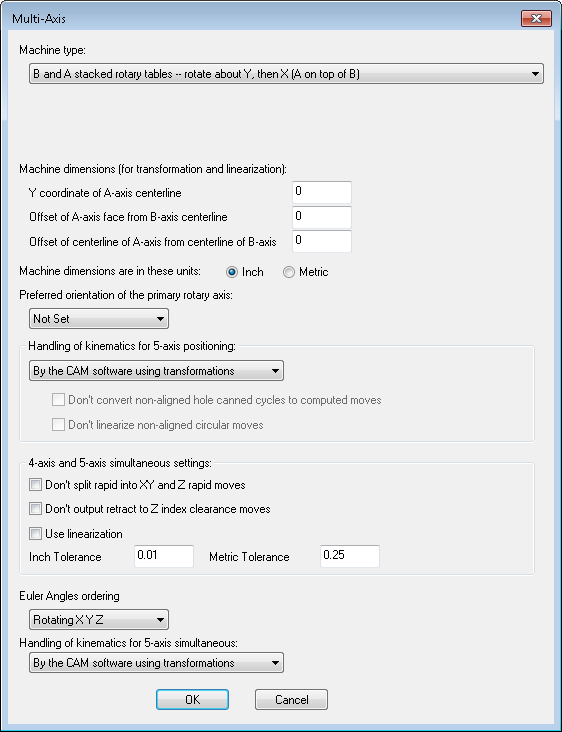
Five axis machine types supported by FeatureCAM are:
- Table on table machines
- Machines with tilting heads
- Generic
Coordinates are output relative to their own setups (no transformations). This is useful for outputting code that is going to be further processed.
For machines with tilting heads, the specific machine architectures supported are as follows:
- C rotary table and B tilting head — These machines rotate about Z with a table, and then the head rotates around the Y-axis.
- C rotary table and A tilting head — These machines rotate about Z with a table, and the head rotates around X.
- C swiveling and A tilting head — These machines rotate around Z on the head, and then the head tilts around the X axis. They are also known as gimbal heads.
- C swiveling and B tilting head — These machines rotate around Z on the head, and then the head tilts around the Y axis
- B and A tilting head — These machines rotate about Y, and then X in the head. See also Setting dimensions for B and A tilting head.
- A and B tilting head — These machines rotate about X, and then Y in the head.
- B rotary table and A tilting head — These machines rotate about Y using a table and then X in the head.
- A rotary table and B tilting head — These machines rotate about X using a table and then Y in the head.
- B and 45 degree angled A tilting head — These machines rotate about Y, then rotate about X with a head that is angled by 45 degrees. This head is also known as a huron head.
- A and 45 degree angled B tilting head — These machines rotate about X, then about Y with a head that is angled by 45 degrees. Also known as a huron head.
- C rotary table and 45 Degree angled A tilting head — These machines rotate about C using a table, then rotate about X with a head that is angled by 45 degrees.
- C rotary table and 45 degree angled B tilting head — These machines rotate about C using a table, then rotate about Y with a head that is angled by 45 degrees.
- B rotary table and A tilting head — These machines rotate about Y using a table and then X in the head.
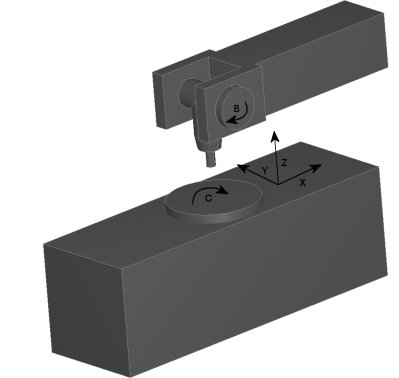
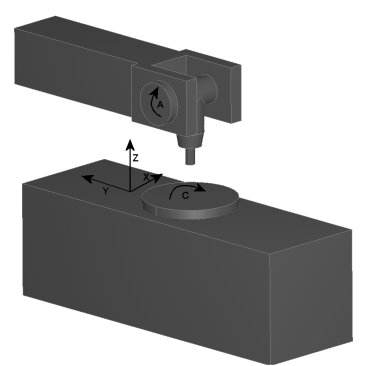
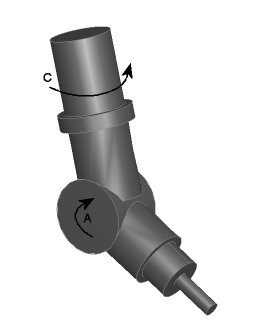
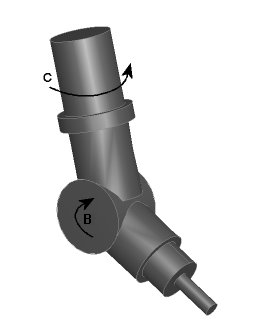
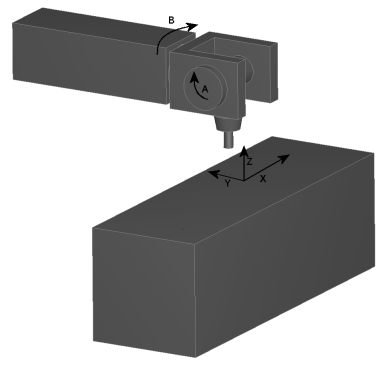
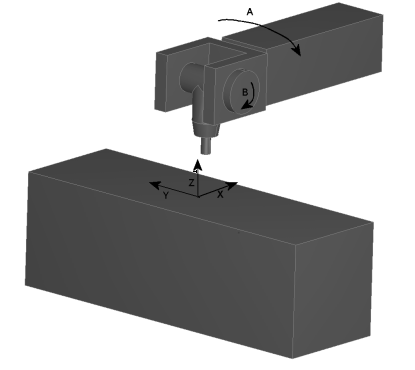
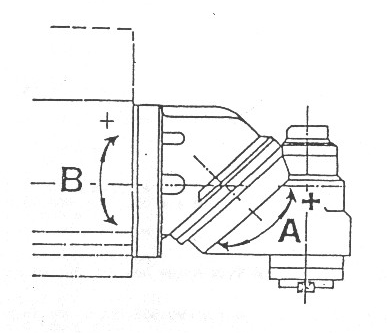
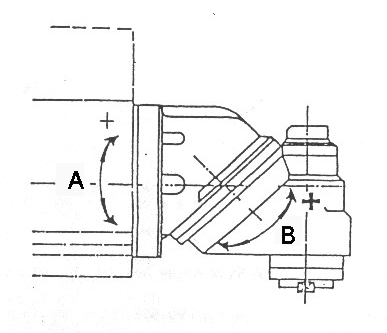
Machine dimensions
- Table on table machines
The Rotary Center Offset values are contained in the post processor files.
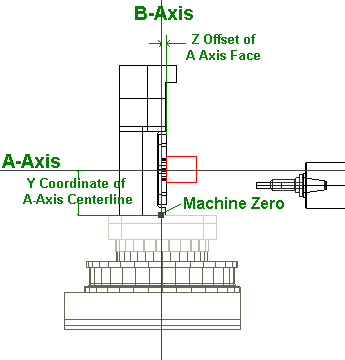
Enter the following values measured on the machine:
- Y coordinate of A-axis centerline — Y distance from the pivot point to the A-axis centerline. This can be zero which means the pivot point is under the A axis pedestal.
- Z Offset of A-axis face from B-axis centerline — Z signed offset of A axis face from B axis centerline.
- Offset of centerline of A-axis from centerline of B-axis — X side-to-side distance in mounting of the rotational centerline of the A axis pedestal, measured relative to B axis centerline.
- Tilting head machines
- Offset of gauge face from second rotary axis – for example, for a B and A tilting head machine, it's the X Y Z offset from the A axis to the gauge face.
- Offset of second rotary axis from first rotary axis – for example, for a B and A tilting head machine, it's the X Y Z offset from the B axis to the A axis.
Preferred orientation of the primary rotary axis — This option is used by FeatureCAM if you select a 5-axis position of Use Post preference for a Setup in FeatureCAM. Select from:
- Positive — Use a positive orientation of the primary rotary axis for the machine. This is the same as selecting a 5-axis position of Standard in FeatureCAM.
- Negative — Use a negative orientation of the primary rotary axis for the machine. This is the same as selecting a 5-axis position of Alternate in FeatureCAM.
- Not Set — FeatureCAM chooses the orientation. This is the default setting.
Handling of kinematics for 5-axis positioning — Select from By the CAM software using transformations, By machine tool using RTCP (Rotational Tool Center Point), and By machine tool using Spatial Angles.
Don't output retract to Z index clearance moves — When indexing in 5-axis positioning, FeatureCAM includes a Z index clearance move to ensure the tool is clear from the part. Select this option to prevent FeatureCAM from including the retract to Z index clearance move when indexing between operations in 5-axis positioning. You must select this option if you are using the Smith Bits APT post. This enables the correct APT code to be output for hole canned cycles that are not aligned with the Z-axis in RTCP (Rotational Tool Center Point).
Handling of kinematics for 5-axis simultaneous — Select from:
- By the CAM software using transformations
- By machine tool using RTCP (Rotational Tool Center Point)
Linearization settings for 5-axis simultaneous:
- Use linearization — If selected, each move is refined into smaller moves so that the angular movements do not result in an overcut.
- Linearization tolerance — Enter the tolerance linearization used to refine the moves.